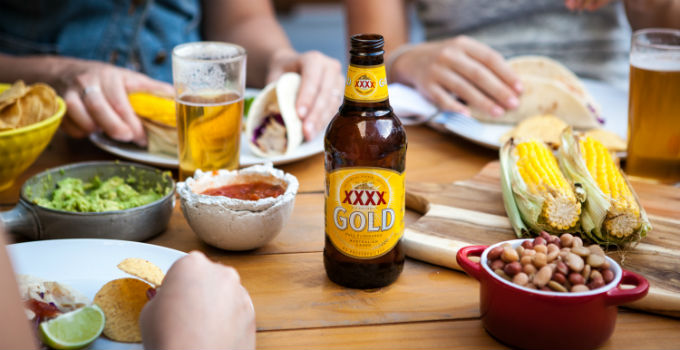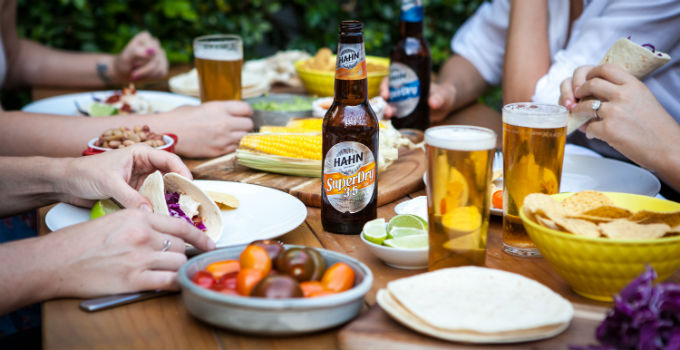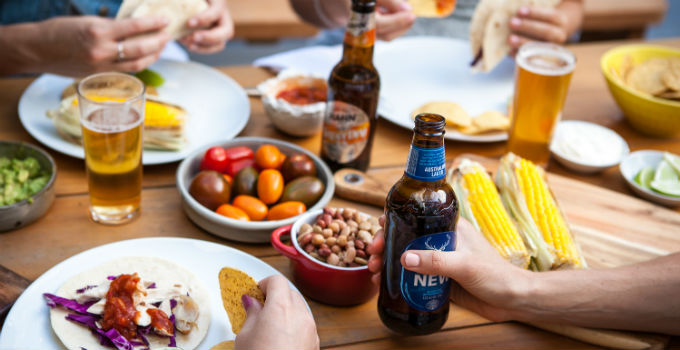
We’re sure you love beer – but how much do you really know about it? Sure, you might know that there’s a difference between a Pale Ale and a Porter, and that it’s made with something called hops, but, do you know the perfect temperature to enjoy an IPA, or how to find the perfect beer to match your meal?
Don’t worry, we’re not going to reg-ale you with facts about different strains of yeast or how to judge a beer’s aroma, but we are going to give you a few tidbits of knowledge to add to what we all already know: beer tastes great.
Well actually, there are only four core ingredients in beer: water, hops, malted barley and yeast. Brewers might also add other grains, and the real adventurous types will throw in everything from pumpkin to marshmallows, but typically all you need is those four ingredients. It’s the brewing process that makes all the difference.
And not just your next BBQ – you can match beer to cheese, seafood, even dessert! Craft beers especially have so many complex flavours that you can pair just about anything with a cold, refreshing brew, so tell your wine friends it’s ok, but you’ll stick to a Tooheys Extra Dry with your prawn skewers, thanks.
#1. Many beers are on average 99.9% sugar free
That’s right, contrary to popular belief, many beers are actually quite low in sugar. While sugar is essential during the first stages of the brewing process, the yeast added to beer consumes the sugar, producing alcohol, carbonation, and everything else we love about our favourite brews. A James Squire 150 Lashes for example, is 99.9% sugar free on average and only contains 126 calories per serve. So if you’re worried about that growing waistline, it’s probably not the beer – it’s the pizza.#2. Most beers are preservative free
Hops, one of the main ingredients of beer, are a natural preservative, meaning there’s no need for adding any preservatives, keeping beers like Tooheys New and James Boag’s preservative free. #3. So what the hell IS in beer?
#3. So what the hell IS in beer?
Well actually, there are only four core ingredients in beer: water, hops, malted barley and yeast. Brewers might also add other grains, and the real adventurous types will throw in everything from pumpkin to marshmallows, but typically all you need is those four ingredients. It’s the brewing process that makes all the difference.
#4. There are only two main types of beer, but there are hundreds of styles of beer
Yep, all beer is either an ale or a lager. Within those two types though, there are literally hundreds of styles, from pilsners like the Little Creatures Pilsner to darker beers like White Rabbit’s Dark Ale and everything between, including a whole lot you’ve probably never heard of. Time to do a little taste testing? Head to Beer the Beautiful Truth to check out a few different styles for inspiration.#5. Not all beers are best served ice cold
We know – shocker! As a general rule, the higher the alcohol content, the warmer a beer should be served. Of course we don’t mean lukewarm beers – we just mean that while a Little Creatures Pale Ale might be best straight out of the fridge, you might want to let a James Squire Jack of Spades Porter sit on the bench for 10 minutes first. However, we know that this all comes down to personal taste and how you like enjoying your brews. #6. Beer, like wine, can complement your meal
#6. Beer, like wine, can complement your meal
And not just your next BBQ – you can match beer to cheese, seafood, even dessert! Craft beers especially have so many complex flavours that you can pair just about anything with a cold, refreshing brew, so tell your wine friends it’s ok, but you’ll stick to a Tooheys Extra Dry with your prawn skewers, thanks.
#7. You can’t judge a beer by its colour
If you’ve always been a little scared to try a dark beer, don’t be. Not only does the colour have not much at all to do with the strength and alcohol level, but you might find yourself enjoying the malty flavours of a beer like Tooheys Old even more. Put it this way – you like dark chocolate, right?#8. Beer is best when it’s fresh
You might think this one’s a no brainer, but there’s a catch: technically speaking, beer doesn’t expire. However, brewers put a bottling date or expiration date on their bottles as a guide for when you’ll get the maximum enjoyment out of each brew, as except for a few bottled fermented beers, most beers are intended to be enjoyed straight from the brewery. The simple rule to remember is that beer is best fresh. Store it cool and out of the light and drink it as soon as possible – which shouldn’t be too much trouble. So there you go – now you’re armed with all you need to answer the question ‘What should we drink?’ with ‘Have a beer!’. Have we got you thirsty for more? Find out more useful beer facts at Beer the Beautiful Truth. For more information and inspiration on the facts behind your favourite beers visit beerthebeautifultruth.com – who this article was created in partnership with.

